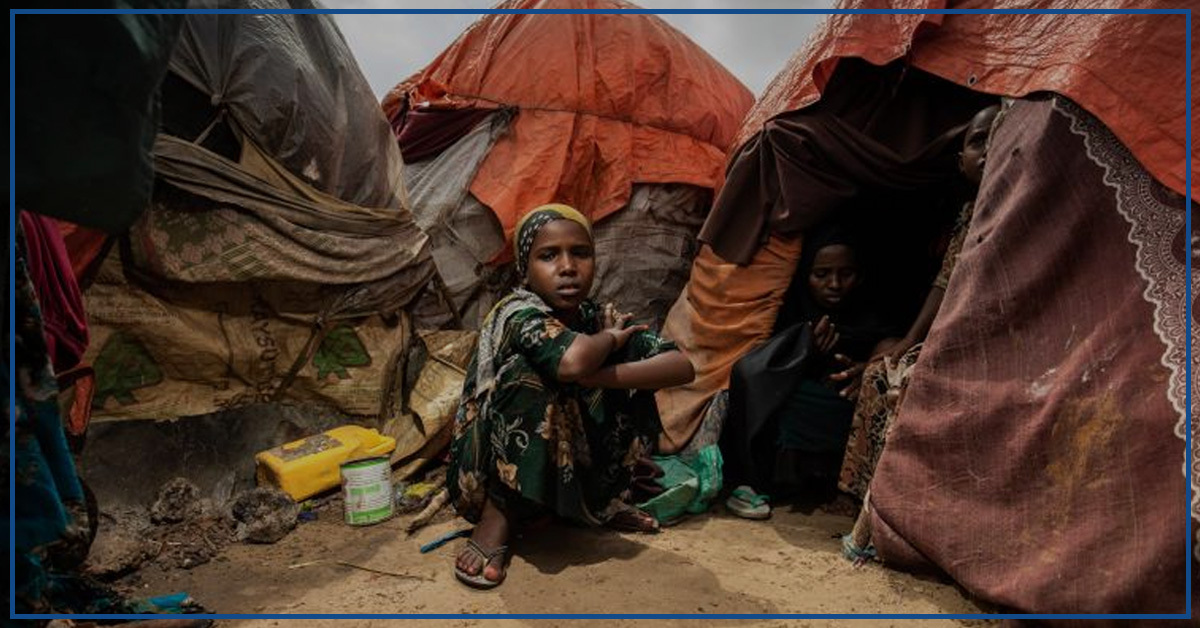A startling revelation from UNICEF shows that over the period between 2016 and 2021, more than 43 million children were forced out of their homes due to the relentless onslaught of floods, storms, droughts, and wildfires.
This equates to a harrowing reality of 20,000 children being displaced every single day, a direct consequence of the increasingly severe weather conditions fueled by climate change.
The study’s findings highlighted that a staggering 95% of recorded child displacements were triggered by floods and storms, underlining the acute vulnerability of children in the face of natural disasters. The remaining cases were attributed to droughts and wildfires, further emphasizing the urgent need for climate action.
UNICEF Executive Director Catherine Russell expressed deep concern, stating, “It is terrifying for any child when a ferocious wildfire, storm, or flood barrels into their community.” This stark reality emphasizes the need for immediate action to mitigate the impact of climate change on the world’s most vulnerable population.
A significant aspect of this report is its groundbreaking nature; it represents the first comprehensive analysis of child displacements caused by climate-related events.
UNICEF stressed that until now, these children and their struggles have largely remained hidden from statistical view, advocating for greater attention and concerted efforts to address this urgent issue.

The impact of this crisis is particularly severe in East Asia and the Pacific, where the ferocity of climate-induced calamities has left a lasting mark. In 2020, Cyclone Amphan alone forced a daunting 1.5 million child displacements across countries like India, Bangladesh, Myanmar, and Bhutan.
The subsequent year saw Typhoon Rai wreaking havoc, displacing another 1.5 million children across the Philippines, Palau, and Vietnam.
However, certain countries bear the brunt more than others. The Philippines, India, and China, due to their geographical susceptibility to floods and storms, experienced a collective upheaval of 23 million children from their homes and schools during the six-year period.
Despite implementing preemptive evacuation plans, these nations continue to grapple with the massive displacement of their child populations. For instance, the small Caribbean island nation of Dominica witnessed a devastating 76% displacement rate among its child population over the same six-year period due to ferocious storms.
South Sudan and Somalia faced a different kind of struggle, battling a disproportionately high percentage of child displacement caused by flooding. The lack of effective evacuation plans in these countries leaves their children even more vulnerable to the wrath of natural disasters.
The consequences of climate change extend beyond floods and storms. Prolonged droughts, notably affecting Somalia, Ethiopia, and Afghanistan, have also led to over 1.3 million children being forced to abandon their homes.
Unfortunately, due to limited data availability for slow-onset disasters like droughts, these figures are likely an underestimate.
The haunting reality of wildfires is not confined to a specific region. Even in the US and Canada, children have been victims of displacement due to these infernos, with predictions hinting at more widespread displacements in the future.
Regardless of the duration of displacement, its aftermath leaves a lasting scar on these children, exposing them to various risks including exploitation, child trafficking, malnutrition, disease, and inadequate immunization.
The urgency to address this escalating crisis is further underscored by the grim reality that with every additional 1 degree Celsius of global warming, the risk of displacement due to flooding surges by an alarming 50%.
UNICEF’s Catherine Russell urges swift action, emphasizing that while armed with the necessary tools and knowledge, the response to this escalating challenge has been lamentably slow.
The time to act is now, ensuring a safer and more secure future for the countless children impacted by the relentless march of climate change.





